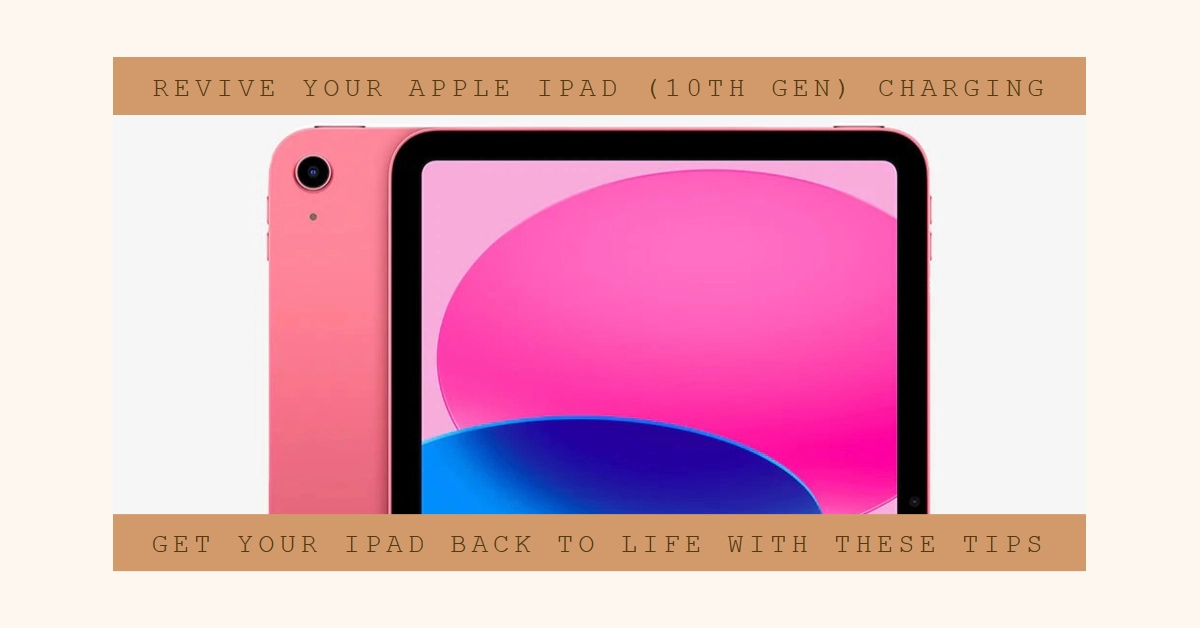A dead iPad is a frustrating sight, especially when you need it most. But before you resign yourself to a trip to the Apple store, there are several troubleshooting steps you can take to get your iPad charging happily again. This guide will walk you through the most common causes and solutions, from simple checks to more technical fixes. So, grab your iPad and let’s diagnose the problem!
Checking the Essentials
Before we dive deeper, let’s eliminate some common culprits:
1. Power Source and Cable
- Check the outlet: Make sure the wall outlet you’re using is working by plugging in another device.
- Inspect the cable: Look for any visible damage to the cable, such as fraying or breaks. Try using a different cable, preferably the original one that came with your iPad.
- Test the adapter: If you have another compatible power adapter, try using that instead.
2. iPad Port
- Clean the port: Gently remove any dust or debris that might be lodged in the Lightning port using a compressed air can or a toothpick wrapped in a soft cloth. Avoid sharp objects.
- Check for damage: Look closely for any physical damage to the port, such as bent pins or corrosion.
3. Software Glitch
- Force restart: This can clear minor software glitches that might be preventing charging. Follow the appropriate steps for your iPad model.
- Update to the latest iOS: Outdated software can sometimes cause charging issues. Update your iPad to the latest version available.
Advanced Troubleshooting
If the basic checks didn’t solve the problem, here are some more advanced steps:
1. Clean the Charging Pin
The charging pin inside the iPad’s Lightning port can get dirty over time, affecting charging. Thus, cleaning it will also likely be able to fix the problem. However, proceed with caution!
Use a non-conductive tool like a plastic SIM card ejector pin or a toothpick wrapped in a soft cloth to gently clean the pin. Avoid touching the pin directly with your fingers.
2. Reset the SMC and NVRAM
These are low-level settings that can sometimes become corrupted. Resetting them can resolve charging issues in rare cases.
Refer to Apple’s official guide for specific steps on how to reset the SMC and NVRAM for your iPad model.
3. Check for Hardware Damage
If you suspect physical damage to your iPad, such as from a drop or water exposure, it’s best to take it to a professional repair shop for diagnosis and repair.
Attempting to fix hardware issues yourself can further damage your iPad.
When All Else Fails: Contact Apple Support
If you’ve tried all the troubleshooting steps and your iPad still won’t charge, it’s time to contact Apple Support. They can provide further assistance, diagnose the issue more accurately, and offer repair options if needed.
You can contact Apple Support through their website, phone, or by visiting an Apple Store.
Additional Tips
- Use genuine Apple accessories: While third-party chargers and cables can be tempting, using genuine Apple accessories ensures compatibility and optimal charging performance.
- Avoid extreme temperatures: Exposing your iPad to extreme heat or cold can damage the battery and affect its charging ability. Keep your iPad within the recommended operating temperature range.
- Clean your iPad regularly: Dust and dirt buildup around the charging port can hinder proper connection. Regularly clean your iPad with a soft, lint-free cloth.
With a little troubleshooting and care, you can keep your iPad powered up and ready to go! But if you’re unsure about any step or suspect hardware damage, it’s always best to seek help from a qualified technician.
